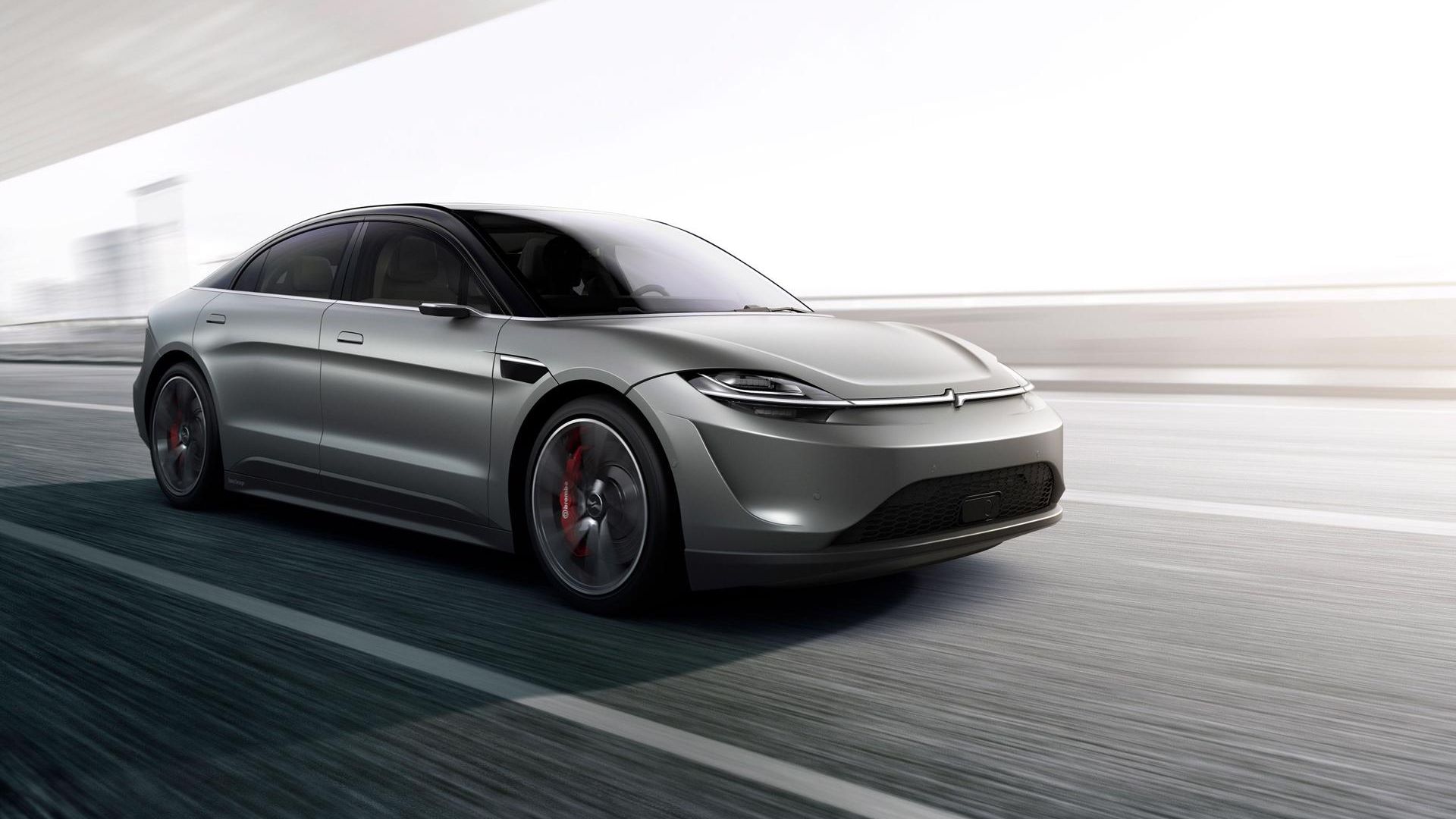

In a move that not a single soul in the world saw coming, electronics and video game conglomerate Sony took the stage at the 2020 Consumer Electronics Show and unveiled not another video game console (it did that earlier), but instead, a full-fledged concept car packed to the gills with its latest battery-electric and connected-car technology. Wowza.

Nearing the end of its on-stage event at CES, CEO Kenichiro Yoshida spoke about the company’s involvement in the automotive market. Specifically, he talked about the imaging and sensing technologies that Sony has developed and could one day be used by vehicle manufacturers for their upcoming high-tech rides. Shortly thereafter, Yoshida announced that Sony would be “accelerating” its efforts toward technology developed for the automotive market and brought out the hard, physical proof: a concept car it dubbed “Vision-S”.
Yoshida claimed that Sony developed the concept to “deepen [its] understanding of cars”; a technology which he claims is a “new entertainment space”. And the Vision-S concept is definitely a suitable space for entertainment, if a car could be called that.



UPDATE: Sony released much more information on the Vision-S’s specifications after the conference late last night. First, the EV uses twin 200kW motors (front/rear) to propel the concept to 62 mph in just 4.8-seconds. Sony doesn’t mention what’s in between the skateboard-chassis’ plates, but says, “The newly designed EV platform enables its application for various uses and car types, not just coupes but also sedans, SUVs and MPVs.”
It also has a top speed of 149 mph, which is fast enough for something that weighs 5,180 pounds—a portly fellow, indeed. Sony went with a double-wishbone front and rear suspension design, and the whole car rides on adaptive air-springs.
Inside, four individual seats, on the platform’s long-wheelbase architecture, give passengers a singularly spacious and comfortable ride. However, immediately noticeable is a dashboard clad with a large panoramic screen, similar to the 49-inch display found in Byton’s vehicles. Sony claims that this will be the center of the vehicle’s entertainment, and a collection of multimedia is shown in the center and in front of the passenger. Sony’s “360 Reality Audio” isn’t just built into the car, it’s also built into the four seats, something which claims to place passengers into an immersive audio experience while in the comfort of their car—we will be the judges of that.




The camera-driven side mirrors, something which undoubtedly is used to showcase a few of Sony’s CMOS imaging sensors. The images appear to be broadcasted to small screens on either side of the massive dashboard display. On the exterior of the vehicle, a single beam of light accents the front grille and flows neatly across a very Porsche Taycan/Tesla Model S/VW ID.3-inspired front bumper. Lastly, a beautiful panoramic glass roof seals the deal, creating a modern piece of art.
Sony also stated that the Vision-S concept was made to look toward the very near future by, “Adopting [the] next-generation architecture, the E/E system is designed to support constant monitoring through connectivity that is enabled by a 5G network and over-the-air (OTA) system updates. The vehicle system will endlessly evolve by working together, undergoing reintegration and being continually updated and optimized.”
Yoshida specifically gives special thanks to Magna Steyr for its engineering help on designing the concept. Magna is the same Austrian engineering firm that currently manufacturers the Toyota Supra, BMW Z4, Jaguar I-Pace, Mercedes-Benz G-Class, and several other luxury vehicles.

The Drive reached out to Magna with questions on its role in the development of the concept, the company responded with the following answers to our questions. When questioned about Magna’s involvement, a spokesperson stated, “Magna offered engineering services to support the development of a prototype vehicle. We have participated in the styling of the prototype vehicle under the leadership of Sony. As such, Magna was responsible to connect the creative input from Sony with the needs of automotive requirements for both the interior and exterior design.”
We also asked about the car’s engineering, which the spokesperson answered with, “We have helped Sony to develop a completely new vehicle concept for a battery-electric vehicle platform. We use state-of-the-art virtual development combined with simultaneous engineering methods based on our complete vehicle know-how and expertise. In general, we use VR technology along with our in-house product development process to ensure short times to market (e. g. Styling, HMI development, Perceived Quality Evaluation etc.).”
As for the what batteries and motors were used, Magna told The Drive they’d “defer to the client,” as well as whether it’s a working prototype and/or if it would ever make production.

We reached out to Sony with additional questions on the Vision-S concept and will update this post if and when we hear back.
A screen from the presentation also reveals other partners who helped in the vehicle development, including Bosch, Continental, and Nvidia.
We’re not sure if Sony plans to actually market this vehicle in any way, though it’s doubtful considering the CEO’s commentary on the concept being designed to further the company’s understanding of the automotive supplier market. Perhaps as we move closer to a more connected-car future, where your home, car, and cell-phone all talk to one another harmoniously, as well as car-to-car communication, the electronics giant is instead looking to break into a market not yet capitalized on, though we certainly have a long way to go before that becomes reality.
Got a tip? Send us a note: tips@thedrive.com